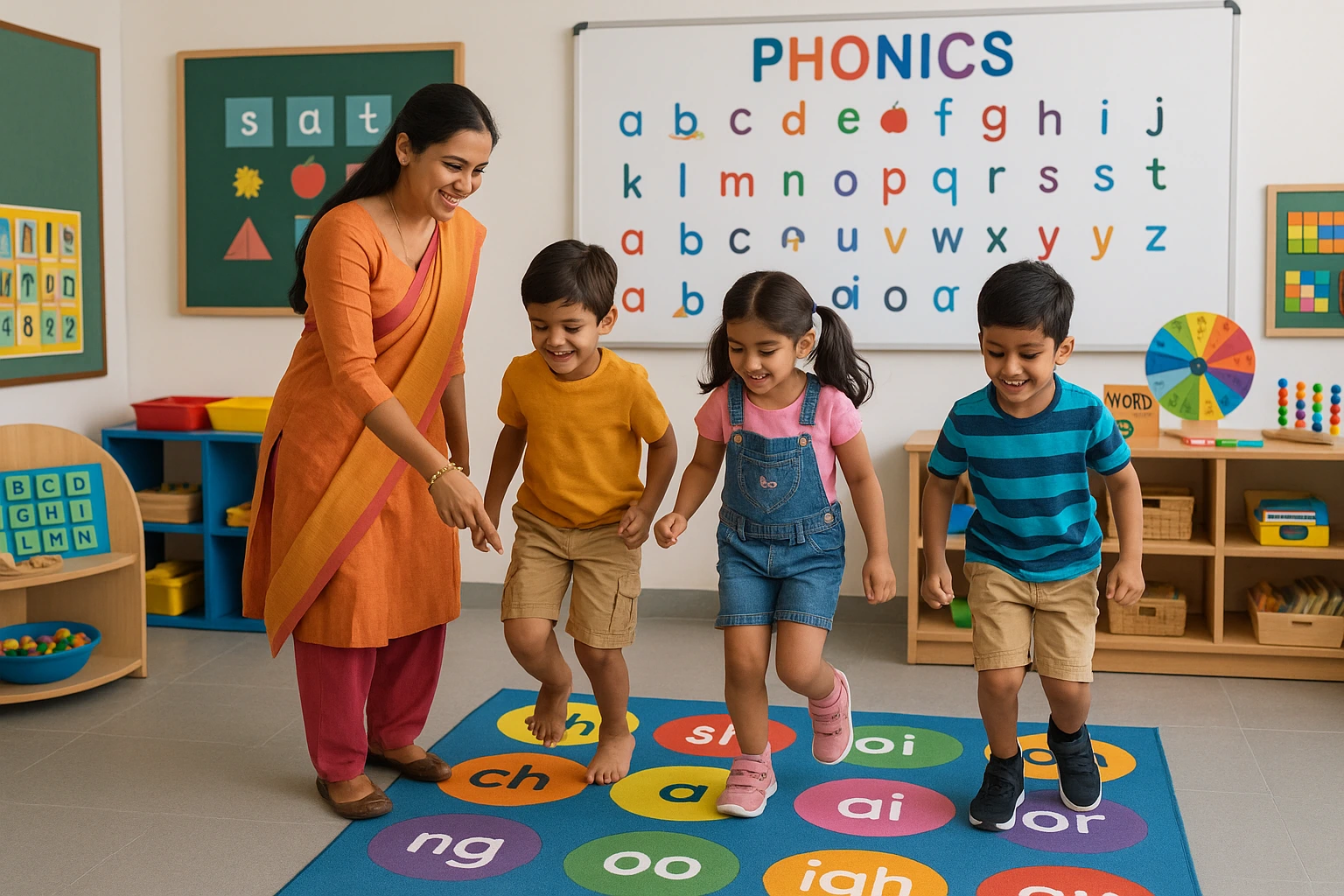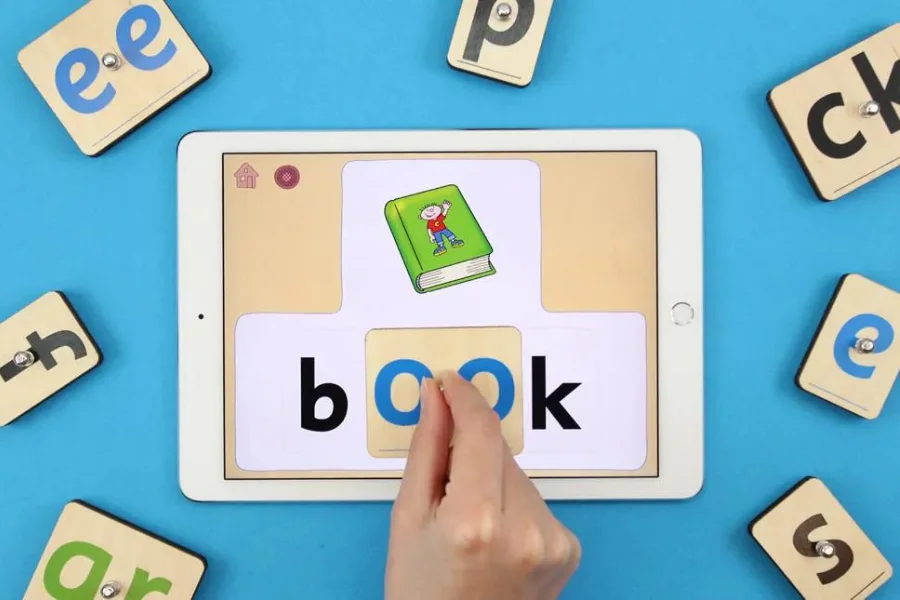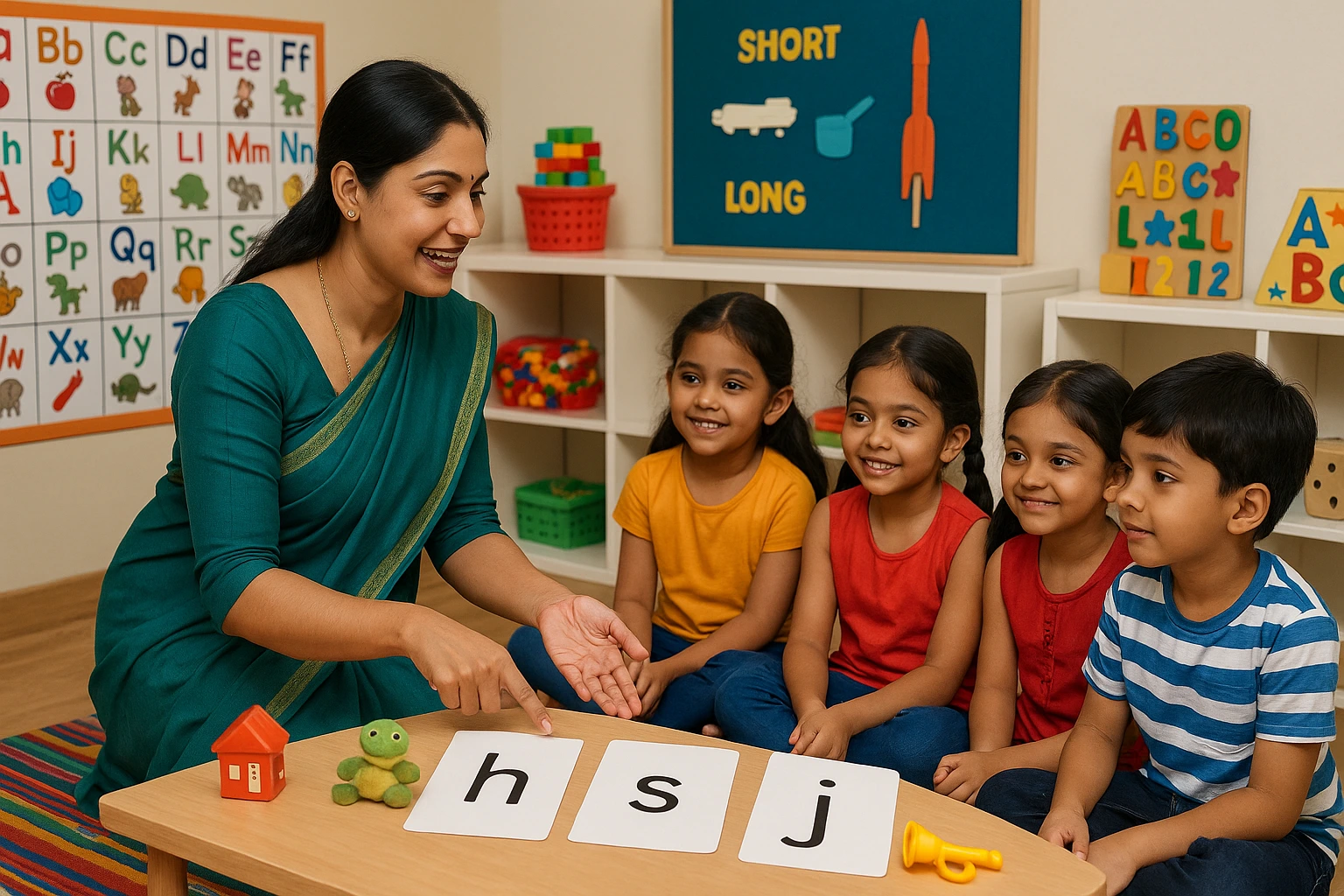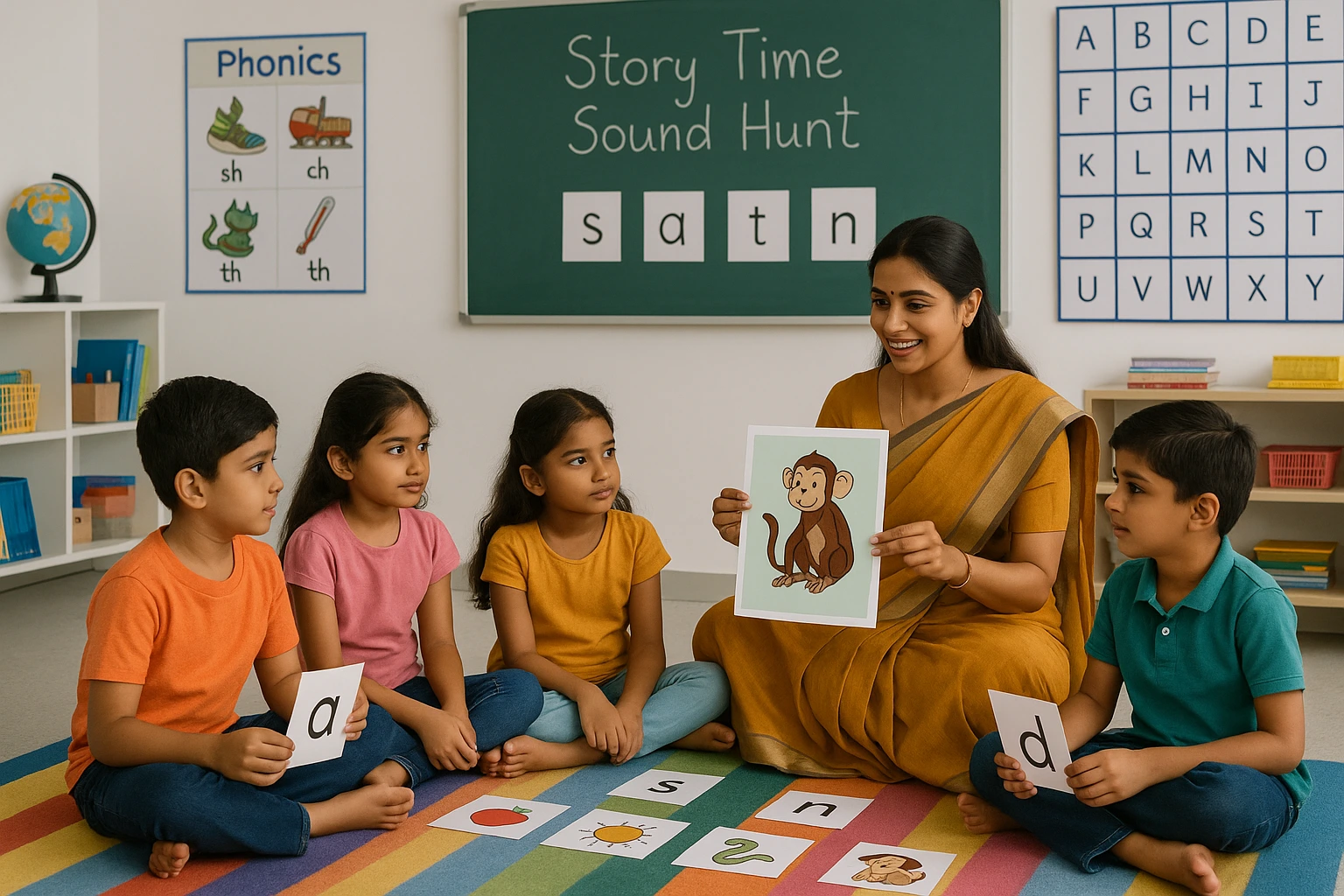Simple and Fun Phonics Example Every Kindergarten Teacher should Use
Simple and Fun Phonics Example Every Kindergarten Teacher should Use
Teaching young children how to read becomes easier when phonics is taught in a playful and clear manner. Phonics is an organized learning of letters and its connected sounds with exceptional rules. With phonetic understanding, children to pronounce letters correctly. This learning can be baffling to children; therefore, Kindergarten Teachers use several simple and fun phonics examples to teach phonics to young students effectively.
Using simple games, songs, and picture cards helps teachers to provide engaging Phonics Examples to students and offer an exciting learning atmosphere. This post shares easy ideas, with each phonics example chosen to keep kindergartners engaged and learning with joy.
Table of Content
The Secret to Making Phonics Fun, without Fancy Materials or Extra Planning
Teaching phonetic sounds to children in early education is crucial for their accurate reading and communication. Using an engaging phonics example is the secret to making Phonics fun, without fancy materials or extra planning.
Here are some good phonic examples that make learning fun:
Use Clapping and Tapping
Turn phonics into a rhythmic game. Teachers can slightly tap or clap while emphasizing specific sounds, for example, s// sound. This activity makes children remember the physical gesture for that particular sound and helps them break down words by sound.
Play “I Spy” with Sounds
Instead of colours or shapes, play “I spy with my little eye, something that starts with /b/.” This phonics example builds sound recognition skills without needing any special items — just what’s already in the classroom.
Label the Classroom with Sticky Notes
Use sticky notes to label objects with simple words like “pen,” “bag,” or “mat.” Each label becomes a phonics example that shows how letters form familiar sounds. Children start to associate print with real-world items.
Story Time Sound Hunt
While reading a story, ask children to listen for a certain sound and recognize it whenever it comes up. Children can raise their hands and say the specific sound. This encourages active listening and identification of phonetic sounds.
Singing Simple Songs with Emphasis on Sounds
Use songs that repeat target sounds. For example, a song that focuses on the /m/ sound helps reinforce one phonics example through repetition and melody.
These simple ideas don’t require lengthy planning or extraordinary tools rely more on creativity. Each phonics example keeps lessons engaging while building strong early reading and communication skills.
To download the brochure of Phonics Course, Click Here!
Call or Whatsapp on +918104606573 / +919869546913, for the details of Phonics Course!

Engaging, Easy, and Effective Phonics Teaching Example
Making learning appealing to young students requires creativity and engaging examples that connect children’s interests with academics. The phonetic teaching techniques target the focus of children and provide them with indelible examples, which are fun and effective.
Here are some engaging, easy, and effective phonics teaching examples:
Alphabet Sound Hunt
This phonics example encourages children to link letter sounds with real-world objects. This makes sound recognition active and fun, reinforcing early reading skills through movement and discovery.
Sound and Action Cards
This phonics example combines visual and physical learning. Each sound has a matching picture and gesture. For instance, for the sound /s/, children can make a slithering snake motion. This method supports memory and recall, especially for children who benefit from kinaesthetic learning.
Phonics Hopscotch
Create a grid with letter sounds as an alternative to numbers. Children jump while calling out the sound they land on. This phonics example blends physical play with sound identification, making practice lively and enjoyable while strengthening sound-letter connections.
Rhyming Basket Game
Fill a basket with objects or picture cards that rhyme. Children pull out two and say the words aloud to see if they rhyme. This phonics example sharpens listening skills and promotes awareness of ending sounds—an important part of early reading success.
Phonics Story Time
Read a simple story and ask children to clap each time they hear a chosen sound. This improves the attentive skills of children, making them focused on the story and recognizing the sounds.
These activities with phonics examples are curated to provide an enjoyable and purposeful learning environment for preschoolers.
To download the brochure of Phonics Course, Click Here!
Call or Whatsapp on +918104606573 / +919869546913, for the details of Phonics Course!

Source: bilingualkidspot
One Phonics Trick to Turn Letter Sounds into Laughter
A prominent phonics example can turn a quiet classroom into an engaging space of learning with the active participation of children. Here’s the phonics trick that brings results. Sound Swap with Silly Words. This method not only strengthens letter-sound recognition but also keeps children engaged through humors and creativity.
Here are additional tricks that turn letter sounds into laughter:
Start with Familiar CVC Words
Introduce simple consonant-vowel-consonant words like “hat,” “cat,” or “dog”. This gives children a strong phonics example to anchor their understanding.
Swap the First Sound with a Funny One
Change the beginning sound of the word to something silly—like turning “cat” into “zat” or “hat” into “lat.” Exaggerate the sound and expression. This phonics example creates laughter and reinforces how different sounds form new words.
Encourage Children to Make Their Own
Let the children pick a word and swap the first letter sound. They might say “log” becomes “bog” or “fog.” This active involvement turns the phonics example into a hands-on learning activity.
Use Visual Aids and Movements
Add pictures or simple gestures to match the silly word. If “cat” becomes “bat,” flap your arms like wings. The movement enhances memory signals to the phonics example.
Repeat and Build a Word Wall
Create a space where all the fun words are displayed. This reinforces each phonics example through repetition and serves as a visual reference.
Using humor as part of the learning process boosts attention, recall, and joy. This phonics example does more than teach—it creates a classroom where letter sounds and laughter go hand in hand.
To download the brochure of Phonics Course, Click Here!
Call or Whatsapp on +918104606573 / +919869546913, for the details of Phonics Course!

How One Simple Activity can Make Phonics the Highlight of the Day?
A well-chosen and engaging phonic example can make children focus and interested in learning sounds. The most effective and simple activity that makes phonics highlight of the day is showing pictures to the children with colourful letters and matching their correct sounds.
Here are the activities that make phonics learning fun and highlight the day:
Engages Visual and Auditory Learning
This simple activity balances the visual and auditory enhancement process of children. And solidify the connection between sounds and letters. In this activity, students are provided with picture cards (e.g., sun, cat, rat) and matching letter sound cards. They see the picture, recognize the object, say it aloud, and match the correct beginning sound of the letter or object.
Encourages Hands-on Participation
Kids love to move around. When they get to match and sort cards physically, learning feels like play. In this activity, teachers turn phonic learning into a game; children will find letter and their associated sounds in the classroom. This helps to remember the phonetic sounds of letters.
Repetition of Activities
As the activity is repeated, children become quicker at identifying sounds. They begin to predict outcomes and feel proud of their progress. This daily phonics example creates a sense of success and boosts their confidence in reading.
Allows for Differentiation
Teachers identify the learning level of different students in class. Some children match beginning sounds, while others may work on ending sounds or blends; therefore, teachers classify activities accordingly to address every learning capacity.
Easy to Set Up and Reuse
Using printed cards or a picture with objects, letters, and sounds in the classroom helps the effectively retain the learning. It is an effective activity that makes phonics the highlight of the day.
With simple and engaging phonics examples, teachers can transform learning into a meaningful, fun activity. Individuals looking to strengthen their teaching methods and gain skills in phonetic sounds should consider the Phonics Teacher Training Course by
. This course equips educators with effective strategies and a wide range of phonics examples suited for early learners.
Make phonics fun and effective—join Vidhyanidhi’s Phonics Course today!
To download the brochure of Phonics Course, Click Here!
Call or Whatsapp on +918104606573 / +919869546913, for the details of Phonics Course!
FAQs
Is Phonics Activity Effective for Struggling Readers?
Phonics activity is effective for struggling readers, as it helps them break down words and connect them with the associated sounds of letters.
How to Learn About Phonics Activities?
The Phonics Teacher Training Course is a good way to learn about phonics activities. It prepares educators with engaging tricks and examples to teach phonics.





